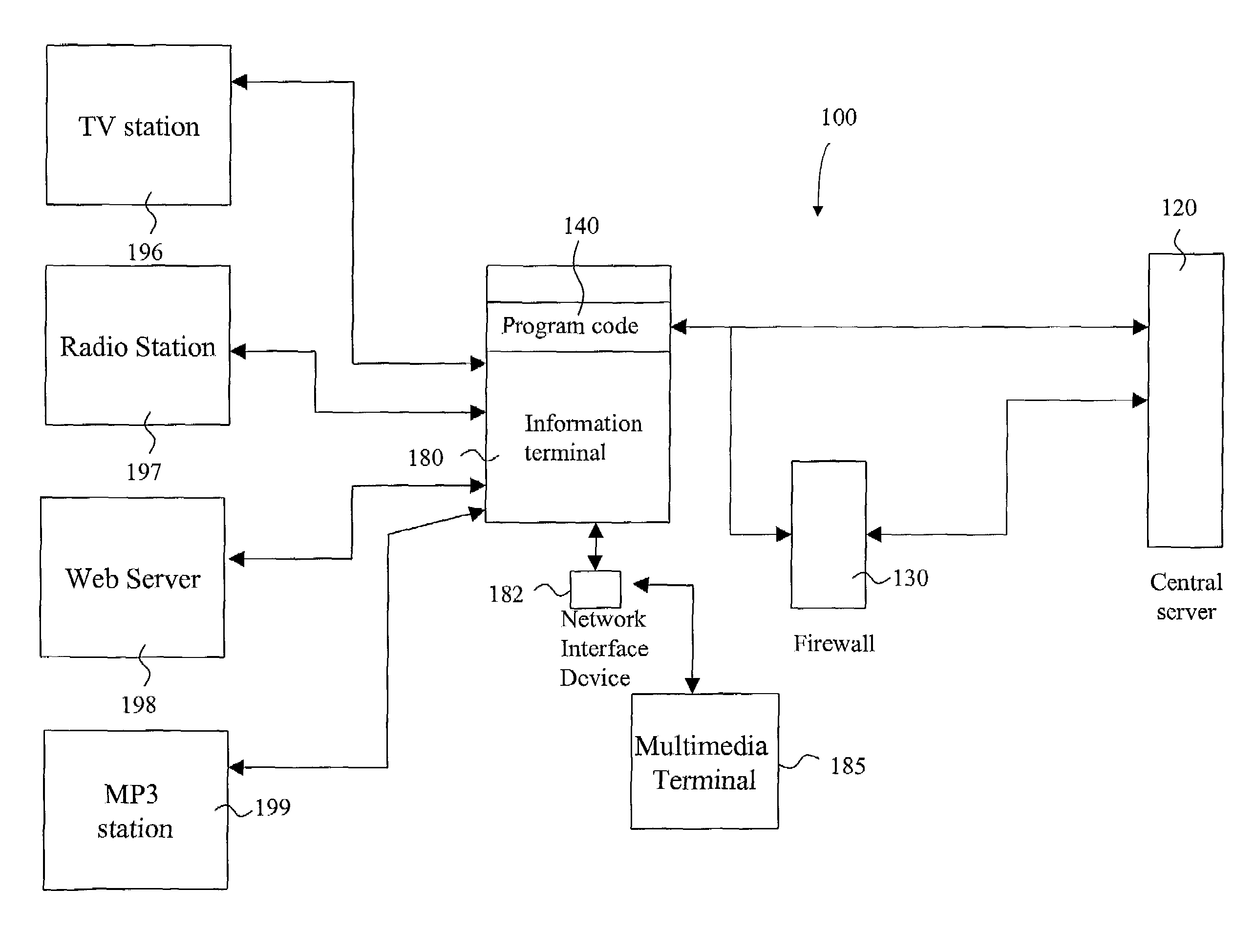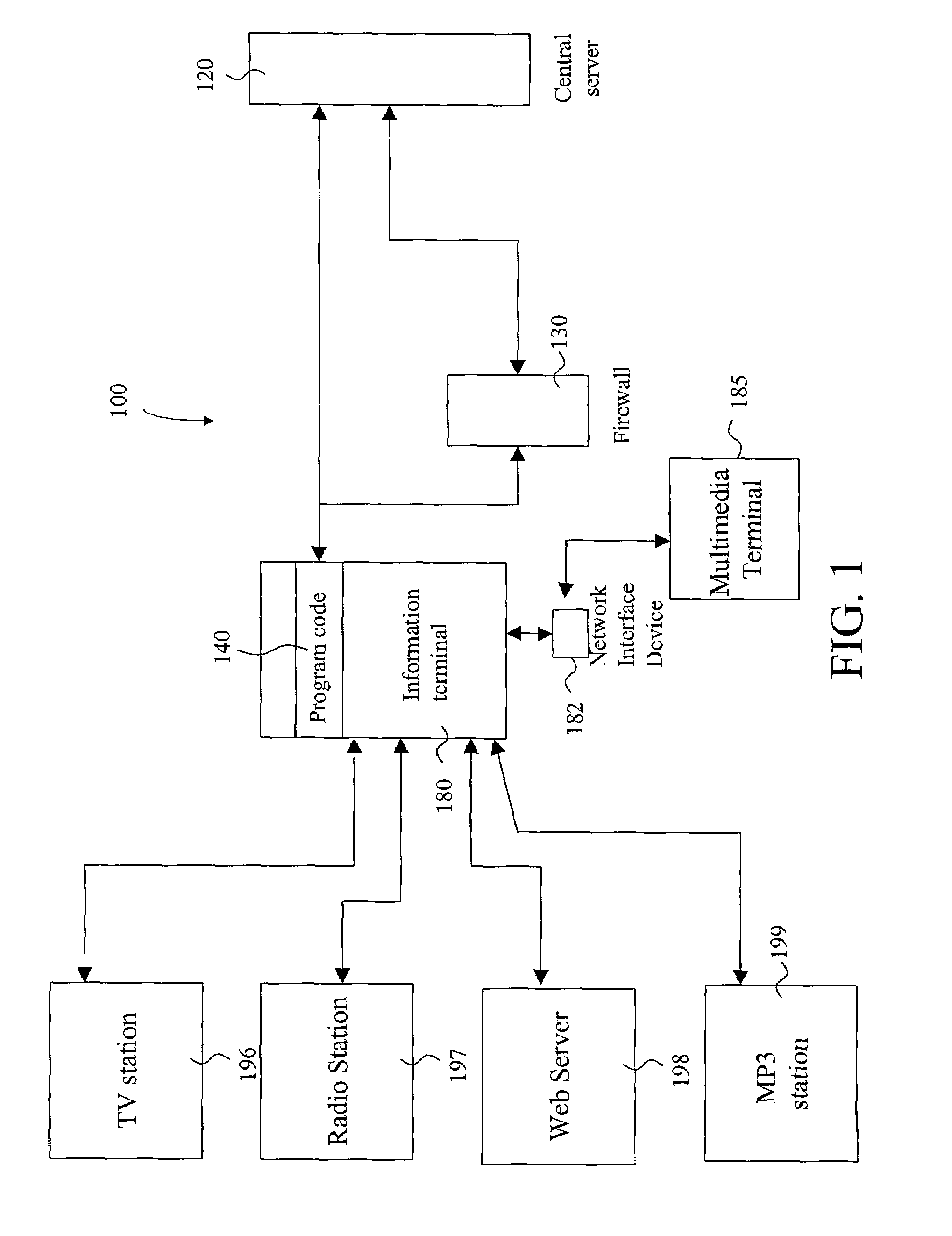Distributed monitoring system providing knowledge services
a monitoring system and knowledge technology, applied in the field of information retrieval, can solve problems such as inability to solve, limited information content, and inadequate present methods of organizing and presenting information available to users, and achieve the effect of improving the quality of information available to users and improving the quality of information
- Summary
- Abstract
- Description
- Claims
- Application Information
AI Technical Summary
Benefits of technology
Problems solved by technology
Method used
Image
Examples
Embodiment Construction
[0053]Turning now to the drawings, FIG. 1 is a simplified diagrammatic view of one embodiment of a system 100 generally constituted in accordance with the present invention. A central server 120 is provided with program code, such as JAVA® code, for example, or other suitable programming, which may be accessible from any Internet capable machine. A user at a remote location may have access to the Internet, and therefore to the central server 120, through a workstation, desktop, or portable notebook or laptop computer, for example, or through a wireless or handheld terminal, such as a portable Personal Communication System (PCS) or Personal Digital Assistant (PDA) device. Internet access may be through traditional land-line telephone connection, through higher bandwidth connections such as ISDN, DSL, T-1, T-3, coaxial, or fiber optic cables, or through cellular or wireless digital technology, for example, as is known in the art.
[0054]The program code at the central server 120 include...
PUM
 Login to View More
Login to View More Abstract
Description
Claims
Application Information
 Login to View More
Login to View More - R&D
- Intellectual Property
- Life Sciences
- Materials
- Tech Scout
- Unparalleled Data Quality
- Higher Quality Content
- 60% Fewer Hallucinations
Browse by: Latest US Patents, China's latest patents, Technical Efficacy Thesaurus, Application Domain, Technology Topic, Popular Technical Reports.
© 2025 PatSnap. All rights reserved.Legal|Privacy policy|Modern Slavery Act Transparency Statement|Sitemap|About US| Contact US: help@patsnap.com



